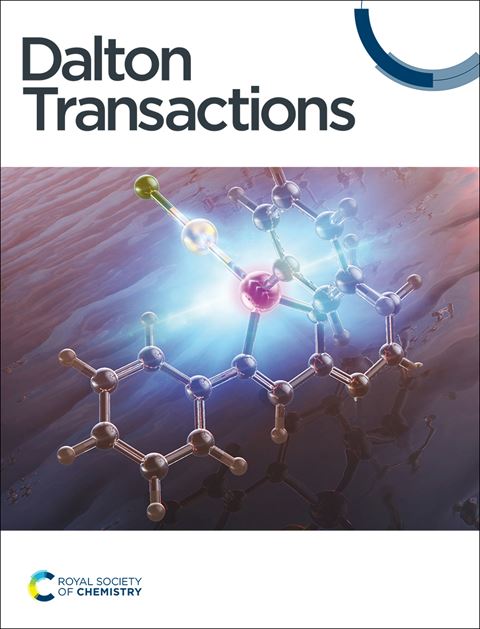Fabrication of a hierarchical PtIr@Rh hollow trimetallic nanozyme with a higher specific activity than HRP for sensitive colorimetric detection
IF 3.5
3区 化学
Q2 CHEMISTRY, INORGANIC & NUCLEAR
引用次数: 0
Abstract
Nanozymes have emerged as promising alternatives to natural enzymes in various fields, owing to their advantages in stability, cost-effectiveness, and multifunctionality. However, their relatively low catalytic activity compared to natural enzymes remains a major challenge for practical applications. Here, we developed a hierarchical PtIr@Rh hollow trimetallic nanorods, where Rh served as the substrate and the surface was decorated with numerous Pt nanoparticles doped with a small amount of Ir. The resulting nanorods exhibited remarkable peroxidase-like activity, with a specific activity of 2287 U mg-1, surpassing that of horseradish peroxidase (HRP). Additionally, the maximum reaction velocity (Vmax) was 1.024× 10-6 M s-1, and the Michaelis−Menten constant (Km) was 1.706 mM. The enhanced catalytic performance was attributed to the unique hierarchical structure and the small amount of Ir doping, as supported by density functional theory (DFT) calculations. The PtIr@Rh nanozyme was successfully applied for the colorimetric detection of L-ascorbic acid, achieving a rapid detection with a limit of detection (LOD) of 0.12 µM. This study introduces a novel nanozyme with superior specific activity compared to natural enzyme, highlighting its potential for colorimetric sensing applications.求助全文
约1分钟内获得全文
求助全文
来源期刊

Dalton Transactions
化学-无机化学与核化学
CiteScore
6.60
自引率
7.50%
发文量
1832
审稿时长
1.5 months
期刊介绍:
Dalton Transactions is a journal for all areas of inorganic chemistry, which encompasses the organometallic, bioinorganic and materials chemistry of the elements, with applications including synthesis, catalysis, energy conversion/storage, electrical devices and medicine. Dalton Transactions welcomes high-quality, original submissions in all of these areas and more, where the advancement of knowledge in inorganic chemistry is significant.
 求助内容:
求助内容: 应助结果提醒方式:
应助结果提醒方式:


